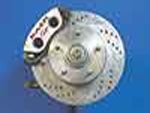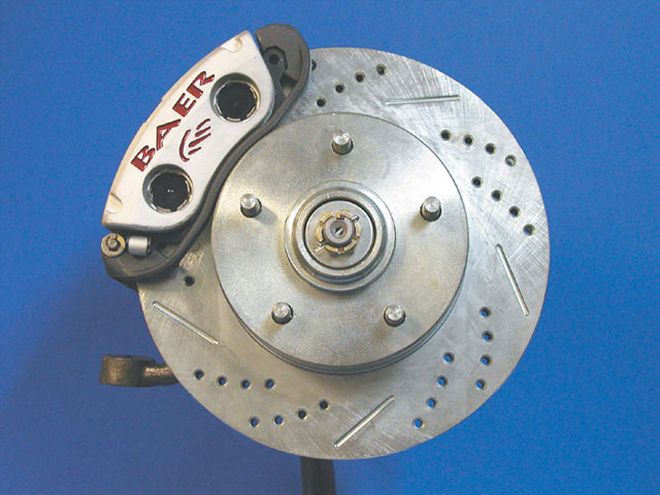

Stopping power was not a priority--or even much of a concern--back when classic cars were designed. Even after disc brakes became available, they remained as optional equipment on some of the fastest production cars of the time. In contrast, it's interesting to note that today, despite the fact that nearly all factory performance cars come with very competent braking systems, upgrading beyond the factory components has become very popular.
Baer Inc. is one of the better known sources for improved brake hardware, having built a reputation by first adapting modern road-course quality brakes to vintage muscle-era iron, and then steadily expanding its offerings to include improved systems for a broad array of today's showroom vehicles, including SUVs and compacts.
Although the merits of shorter stopping distances and more controlled braking are fairly apparent, when it comes to merging the hardware required to achieve world-class braking with vintage vehicles, there is often a conflict. Most modern high-performance brake systems use rotors that are larger in diameter than anything installed at the factory prior to the mid-'80s. What this means is that larger-diameter wheels--sometimes at least 17-inch--are usually required to clear the brake components. On late-model vehicles that rolled off the assembly line with big rollers, this isn't an issue, but for older cars that originally ran tiny 14-inch wheels, it quickly becomes one. While it has also become very popular to outfit older cars with modern large-diameter wheel/tire combos, not everyone wants to go that route.
So, for those enthusiasts of vintage iron who also appreciate the benefits of modern braking, Baer has developed a new addition to its Serious Street line of brake systems. The package combines high-performance PBR aluminum dual-piston calipers (factory equipment on many late-model Corvettes, Mustang Cobras, and others) with 11-inch EradiSpeed rotors. It fits inside any factory 15-inch wheel originally used with disc brakes and can even tuck inside some 14-inch disc-brake rims. Currently, this system is available for certain GM cars, including '67-'69 F-bodies (Camaro/Firebird), '68-'74 X-bodies (Nova, Ventura, Omega, Apollo), and '64-'72 A-bodies (Chevelle, LeMans, Cutlass, Skylark, and so on). In all cases, the same system can be used whether the car originally came with drum or disc brakes. Since the components are based on production pieces, wear parts like brake pads, wheel bearings, and dust seals are available at any auto parts distributor.
We thought the system sounded like the perfect way to finally rid our '67 Camaro daily driver of its original four-wheel drum brakes. The car runs stock-type 15x7 rally wheels, which we'd like to retain, at least part of the time. Steel wheels and tall tires go well with urban commuting, and they're cheap to replace.
The Baer system is relatively easy to install, requiring no cutting or welding, and includes just about everything you'll need to make the swap. We even had them test the car before and after to see if it was all worth it. As it turned out, the new front discs improved the Camaro's 60-mph stopping distances by 24 percent, reducing the average from 234 feet with four-wheel drums to 177 feet. From 100 mph, the Camaro saw a 56 percent improvement, stopping in 526 feet rather than 1,207. Take a look at the installation procedure.